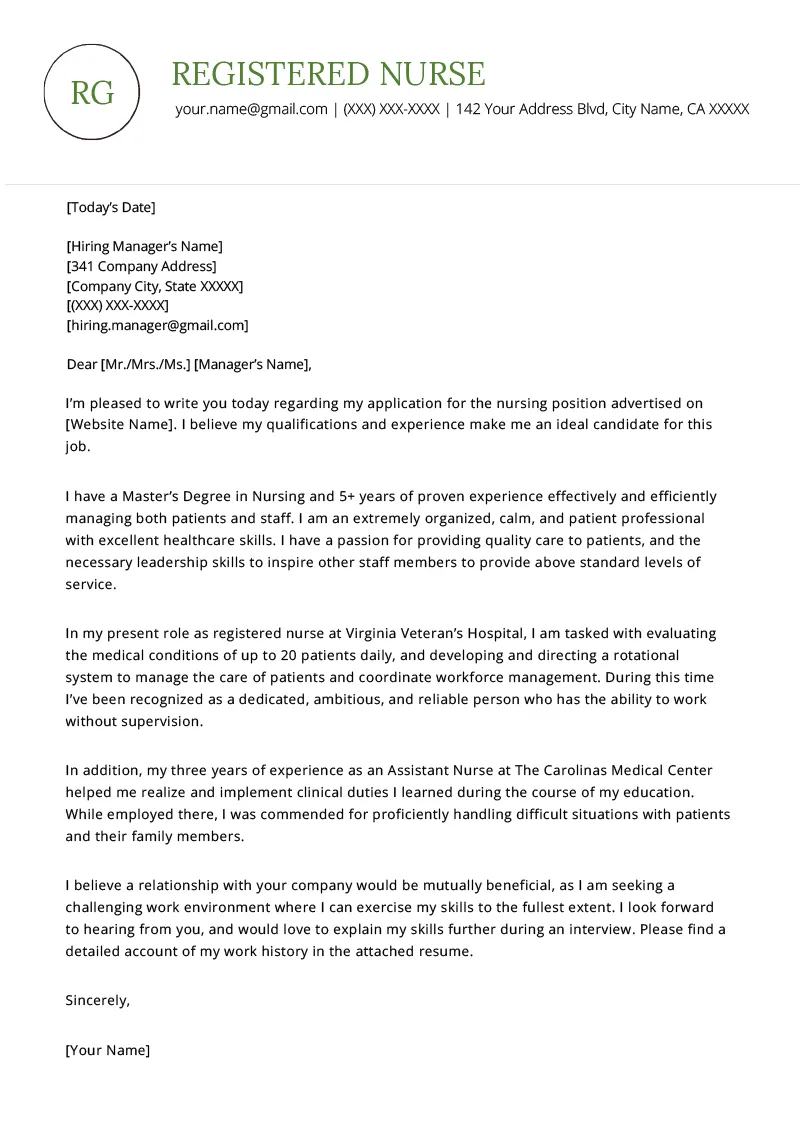What is a Nursing Cover Letter?
A nursing cover letter is a crucial document that accompanies your resume when applying for nursing positions. It serves as a personalized introduction to the hiring manager or potential employer. Unlike a resume, which provides a factual summary of your qualifications and experience, a cover letter offers an opportunity to showcase your personality, communication skills, and genuine interest in the specific role you are pursuing. It’s your chance to make a strong first impression and differentiate yourself from other applicants. A well-crafted nursing cover letter can significantly increase your chances of landing an interview, as it allows you to highlight your unique value proposition and demonstrate your enthusiasm for the nursing profession.
Why Is a Nursing Cover Letter Important?
In the competitive field of nursing, a cover letter is often a critical part of the job application process. It provides an opportunity to offer context to your resume and explicitly explain why your skills and experiences are relevant to the open position. The nursing cover letter demonstrates your communication skills, a key asset for nurses, who must effectively interact with patients, their families, and colleagues. It allows you to tailor your application to the specific requirements of the job, emphasizing the experiences and skills most relevant to the role. Many hiring managers consider a cover letter a key component in their initial screening process. A well-written letter can be the deciding factor in securing an interview, as it provides an opportunity to address potential gaps in your experience or explain any career changes that a resume alone cannot always convey.
How a Cover Letter Complements a Resume
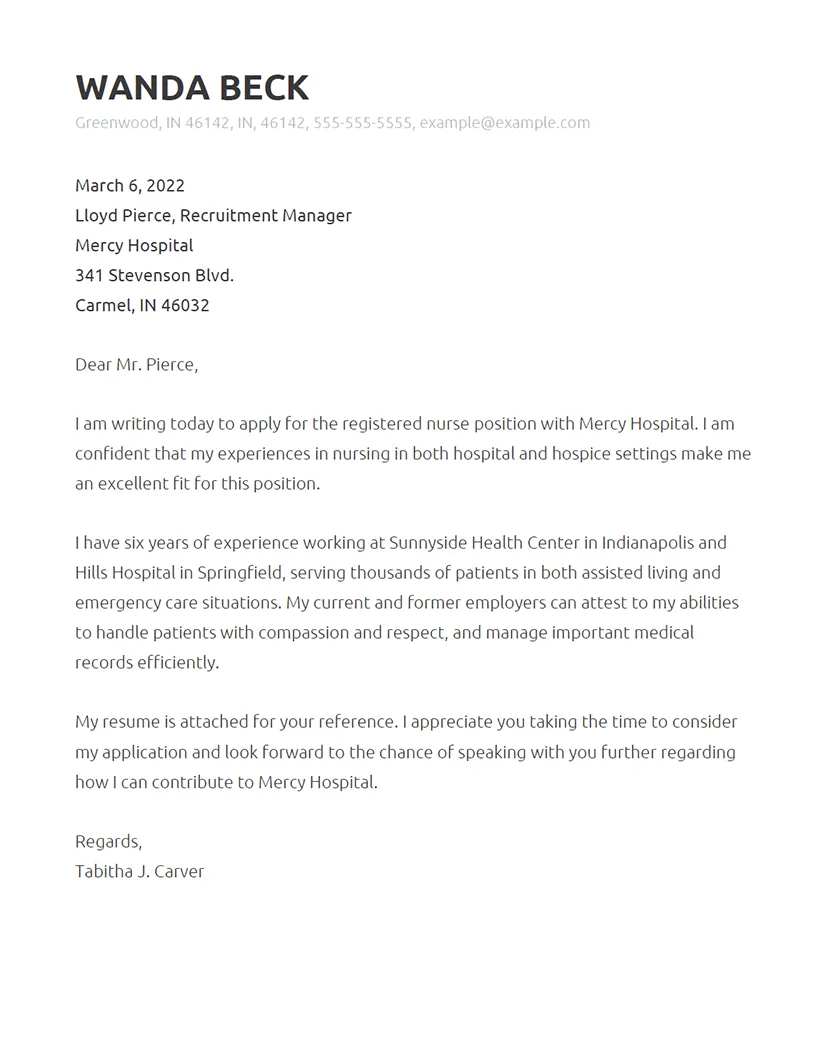
While your resume presents a factual overview of your qualifications, education, and work history, the nursing cover letter allows you to bring these elements to life. The resume lists your skills; the cover letter demonstrates how you’ve used those skills to achieve specific outcomes. It explains your motivations for applying, your career goals, and why you’re passionate about the role. The cover letter should expand on details from your resume, providing specific examples of your accomplishments and the impact you made in previous roles. A cover letter demonstrates your personality and communication style, helping the hiring manager understand who you are beyond your qualifications. This combination of a well-crafted resume and an engaging cover letter provides a holistic view of your capabilities and increases your chances of getting noticed.
Key Components of a Nursing Cover Letter
Header and Contact Information
The header of your nursing cover letter sets the professional tone and provides essential contact details. It is crucial to ensure the hiring manager can easily identify and contact you. A well-formatted header also shows your attention to detail, a key quality in the nursing profession. Accurate and readily available contact information is a must, so be sure to keep it current and easy to read. Always use a professional-looking font, such as Times New Roman or Arial, and maintain a consistent format throughout your cover letter and resume. This demonstrates your commitment to presenting yourself in a polished and professional manner.
Applicant’s Name and Contact Information
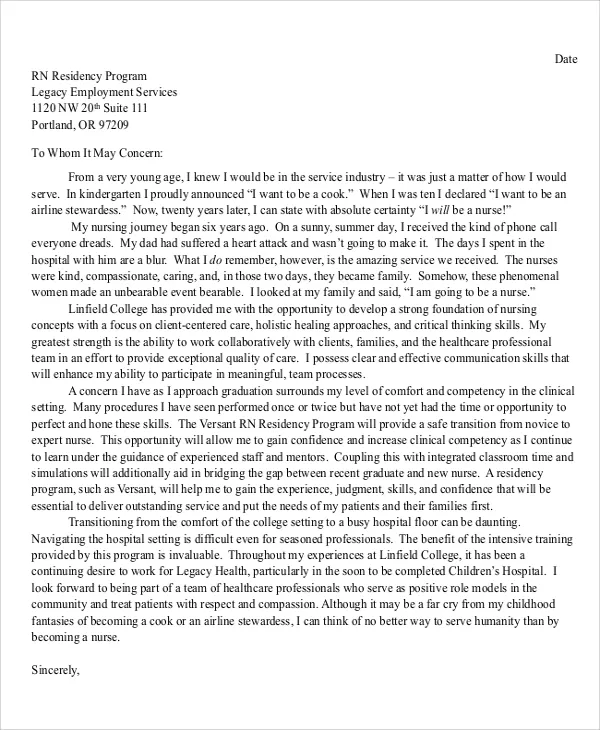
At the top of your cover letter, include your full name, your professional credentials (e.g., Registered Nurse, Licensed Practical Nurse), your phone number, your email address, and, optionally, your LinkedIn profile URL. Ensure that your email address is professional and appropriate. It is crucial that your contact information is current and accurate to ensure the hiring manager can easily reach you. Double-check all details for accuracy, and consider using a professional-sounding email address (e.g., firstname.lastname@email.com) instead of a casual one, such as the one you may use for personal correspondence.
Recipient’s Name and Title
If possible, address your cover letter to a specific person, such as the hiring manager or the nurse manager. This demonstrates that you’ve done your research and are genuinely interested in the opportunity. If you can’t find a specific name, use a professional title, such as ‘Hiring Manager’ or ‘Nurse Manager.’ Include the recipient’s title, such as ‘RN Hiring Manager.’ If you’re unsure, call the human resources department to ask for the name and title of the person who will be reviewing your application. Always spell the recipient’s name correctly and double-check the title.
Date of the Letter
Include the current date on your cover letter, as it indicates when you submitted your application. The date should be placed directly below the recipient’s information. The date format should follow standard conventions (Month Day, Year). This shows that you’ve submitted a current application and helps the hiring manager keep track of the date of your application. Ensure the date is accurate.
Greeting
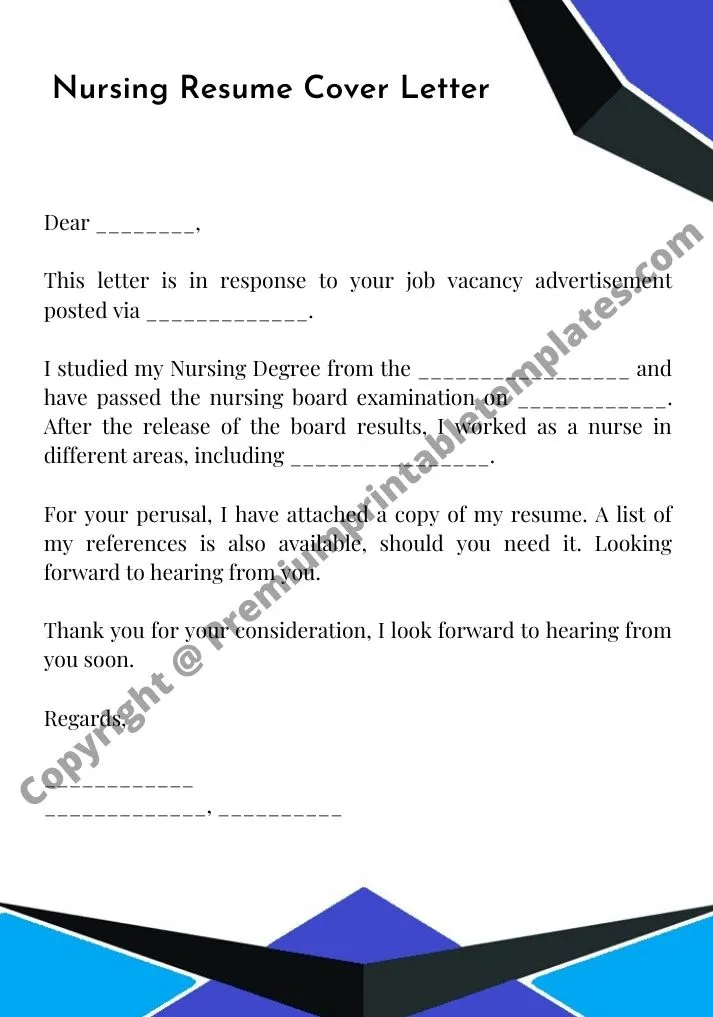
The greeting should be professional and appropriate for the nursing profession. If you have the hiring manager’s name, use ‘Dear [Mr./Ms./Mx. Last Name]’. If you do not have a specific name, use a general salutation, such as ‘Dear Hiring Manager’ or ‘Dear Nurse Manager’. Avoid casual greetings. Always spell the recipient’s name correctly. Using a personalized greeting immediately captures the reader’s attention and shows that you have paid attention to the details. This also sets the tone for a professional and respectful communication style. A well-chosen greeting is essential.
Body Paragraphs
The body of your nursing cover letter is where you sell yourself as the ideal candidate. It should be well-structured, concise, and tailored to the specific job requirements. This section allows you to highlight your skills, experience, and achievements that align with the position. It gives you the opportunity to explain why you are passionate about the role and what you can bring to the healthcare team. Each paragraph should have a clear purpose and contribute to the overall goal of persuading the hiring manager to invite you for an interview. Use strong action verbs and concrete examples to demonstrate your capabilities and show what you have accomplished.
First Paragraph: Expressing Interest and Identifying the Position
Begin your cover letter by clearly stating the position you are applying for and how you learned about the opportunity. Express your enthusiasm for the role and the healthcare facility. Briefly mention your relevant experience and how your skills align with the job requirements. Indicate what specifically attracted you to this position and the organization. This initial paragraph sets the tone and engages the reader, immediately informing them about the purpose of your letter. A strong opening demonstrates your proactive approach and genuine interest in the position. You should also show that you’ve researched the healthcare facility and understand their mission and values. This is your chance to make a compelling first impression.
Highlighting Relevant Skills and Experience
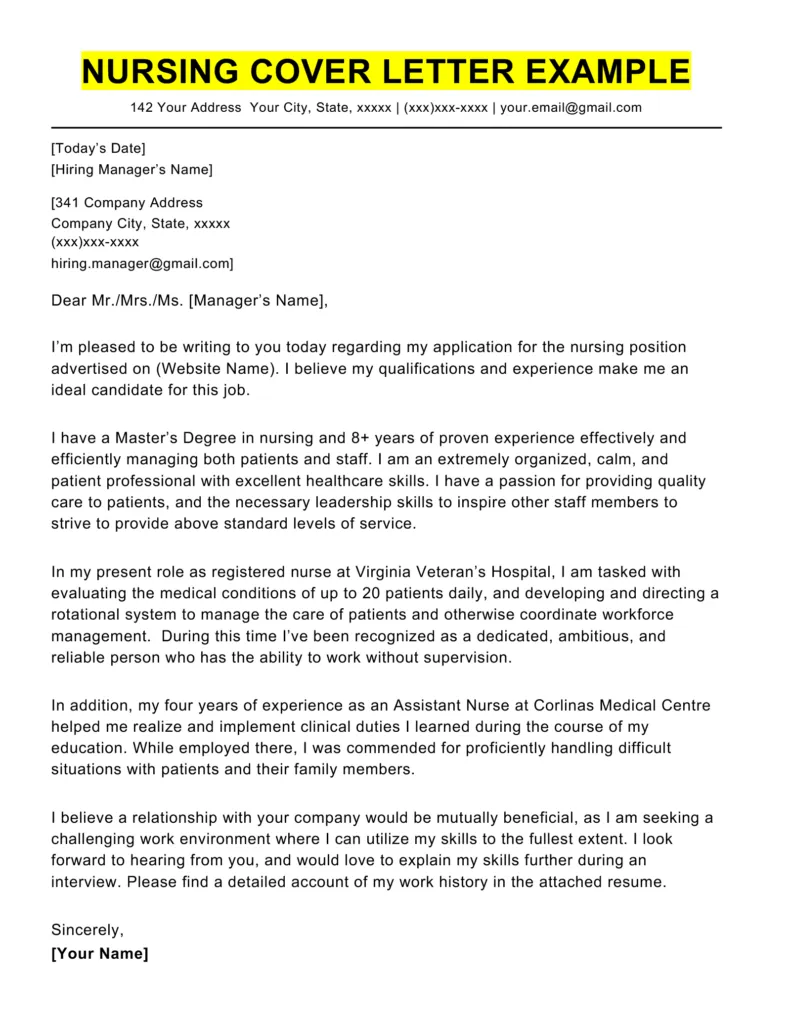
In the subsequent paragraphs, showcase your relevant nursing skills and experience. Focus on the qualifications outlined in the job description. Provide specific examples of your achievements, quantifying them whenever possible. This can include successful patient outcomes, improved efficiency, or contributions to a team. Highlight your experience with specific patient populations, medical technologies, or healthcare settings. Demonstrating how you’ve used your skills to achieve positive results validates your capabilities. Focus on what you’ve learned from each experience and what you have to offer the employer. Emphasize your ability to work effectively in a team, communicate clearly, and handle stressful situations.
Quantifying Achievements
Whenever possible, quantify your achievements using numbers, data, and statistics. For example, instead of saying, ‘Improved patient care,’ state ‘Reduced patient fall rates by 15%.’ By quantifying your achievements, you provide concrete evidence of your skills and abilities. Numbers add credibility to your claims and demonstrate the impact you’ve made in previous roles. Use measurable results to illustrate your value and differentiate yourself from other applicants. The goal is to highlight the tangible benefits you can bring to the healthcare organization. Show how your actions have led to improved outcomes, increased efficiency, or cost savings.
Tailoring Your Letter to the Job Description
Carefully review the job description and tailor your cover letter to match the specific requirements and keywords. Use language and terminology from the job posting. This shows the hiring manager that you’ve read the description and understand the role. Address the required skills and qualifications directly. Include examples that illustrate how you have met the requirements. Tailoring your cover letter demonstrates your attention to detail and your commitment to the position. Adapt the content to align with the employer’s needs and values. This targeted approach significantly increases your chances of making a strong impression. Research the healthcare facility’s mission, values, and culture to show that you are a good fit.
Call to Action and Closing
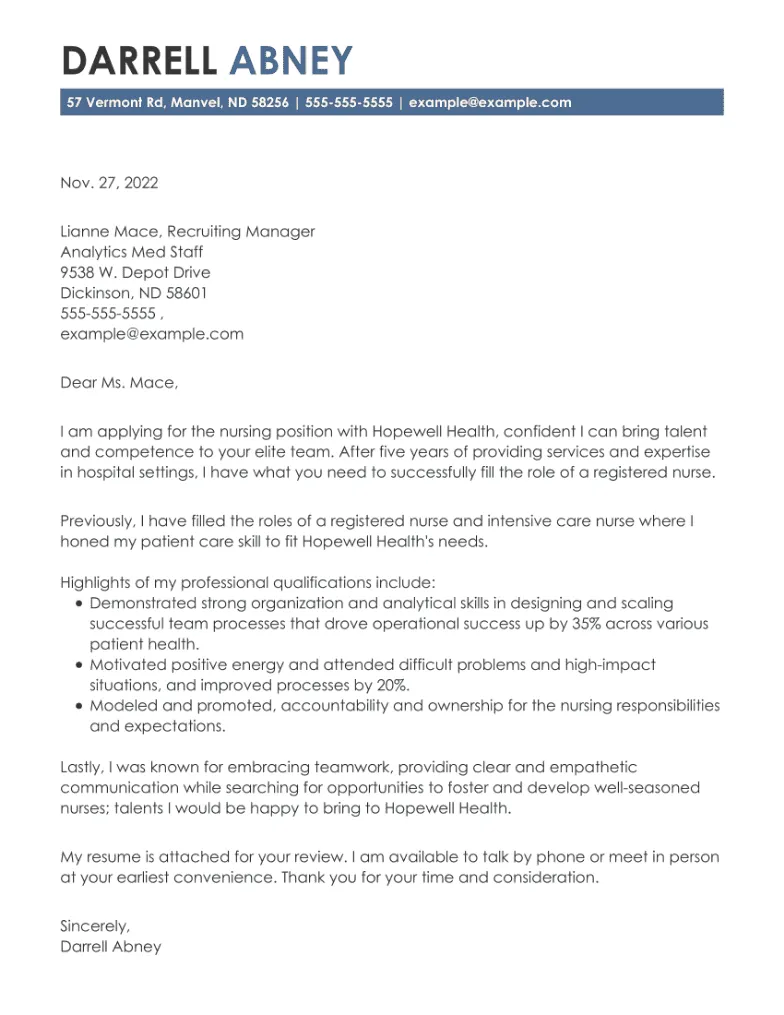
The closing of your nursing cover letter is your last opportunity to leave a positive impression. It should reiterate your interest in the position and encourage the hiring manager to contact you for an interview. This is where you express your enthusiasm and make it easy for them to reach out.
Expressing Enthusiasm and Availability
Reiterate your interest in the position and express your enthusiasm for the opportunity to contribute to the healthcare facility. Thank the hiring manager for their time and consideration. State your availability for an interview. Provide clear contact information so the hiring manager can quickly get in touch. This demonstrates your professionalism and desire to move forward in the hiring process. Express your eagerness to discuss your qualifications further and explain why you’re the best fit for the role. Be positive and confident to create a lasting impression.
Professional Closing
Use a professional closing, such as ‘Sincerely,’ ‘Best regards,’ or ‘Thank you for your consideration.’ Then, type your full name and leave space for your signature (if submitting a printed copy). Ensure your closing is appropriate for the tone of your letter and the context of your application. This ending adds a professional touch and signifies that you have completed the letter in a formal manner. Double-check all details before submitting to ensure everything is in order.
Proofreading and Formatting Your Nursing Cover Letter
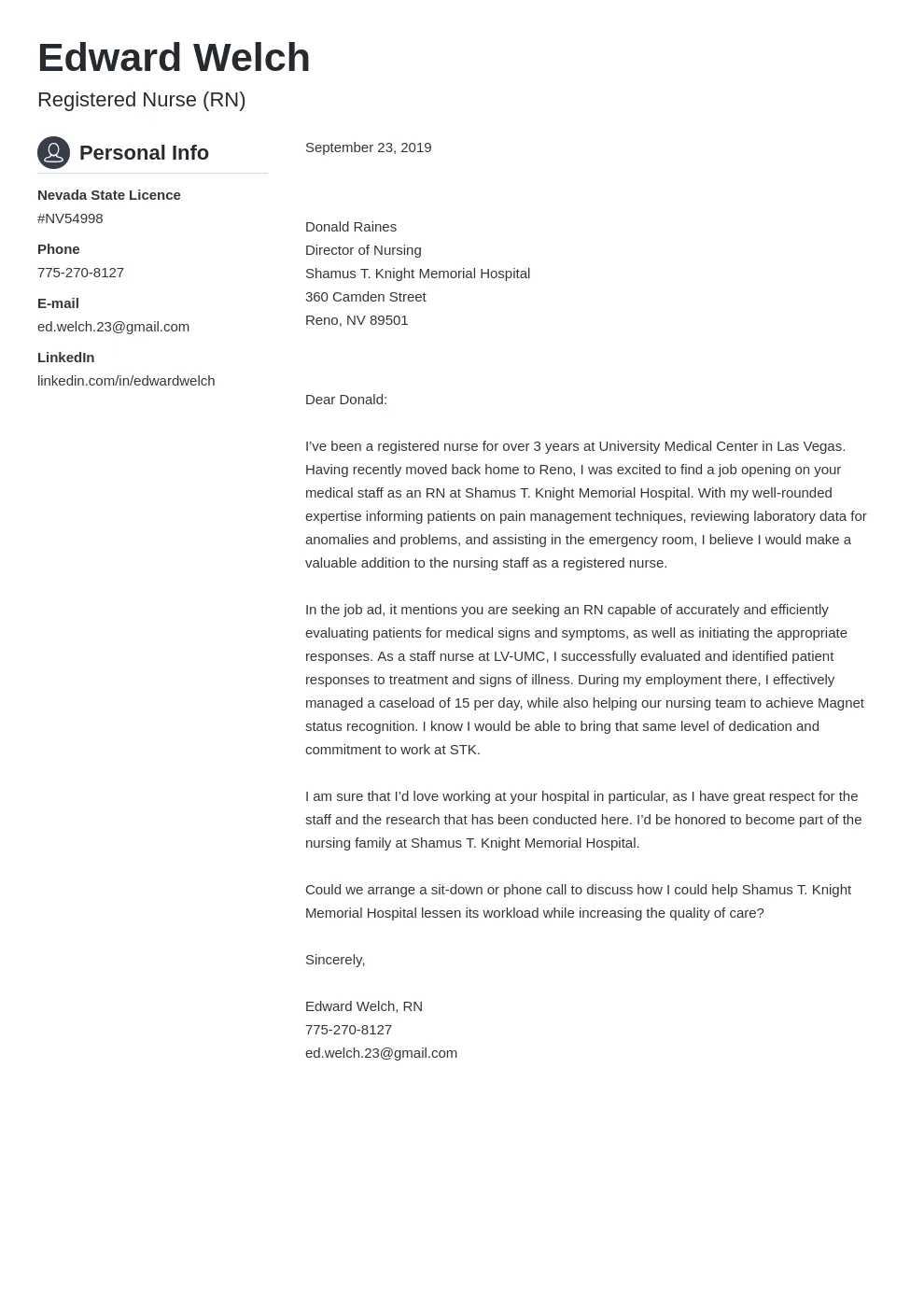
Before submitting your nursing cover letter, meticulously proofread it for any errors in grammar, spelling, and punctuation. A polished cover letter reflects professionalism and attention to detail, essential qualities in nursing. This step demonstrates your commitment to excellence. Ensure your cover letter is well-formatted and easy to read, which makes a positive impression on the hiring manager. Carefully review every sentence to ensure your writing is clear, concise, and error-free. A poorly written cover letter can negatively impact your application, so take the time to proofread it carefully.
Formatting Guidelines
Use a professional font, such as Times New Roman or Arial, in a readable size (11-12 point). Keep your cover letter concise, ideally one page in length. Use standard margins (1 inch on all sides). Use single-spacing within paragraphs and double-spacing between paragraphs. Ensure your cover letter has a clear structure with logical paragraphing, making it easy to read and follow. Align your text to the left. Maintain consistency in formatting throughout your cover letter. Ensure your contact information is clearly displayed in the header. This demonstrates your attention to detail and ensures your letter is visually appealing.
Proofreading Tips
Proofread your cover letter multiple times, and consider reading it aloud to catch any awkward phrasing or errors. Use spell check and grammar check tools, but don’t rely on them entirely; these tools can miss errors. Have a trusted friend, family member, or career advisor review your cover letter for feedback. Pay close attention to the tone and make sure it is professional and appropriate. Ensure that the content is relevant, compelling, and aligned with the job description. Check for consistency in language, formatting, and style. A well-proofread cover letter showcases your professionalism and attention to detail. Review all names and titles to make sure they are spelled correctly.
Examples of Successful Nursing Cover Letters
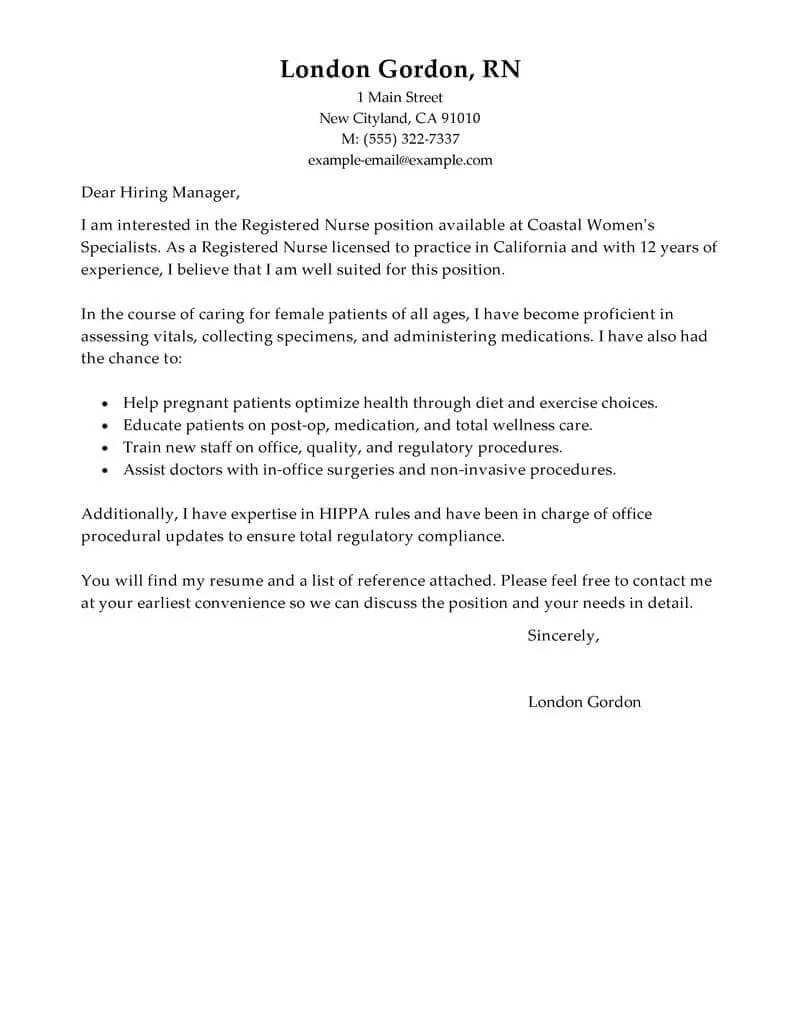
Reviewing successful nursing cover letter examples can provide valuable insight into how to structure and write your own. Look for examples that match your experience level and the type of nursing position you’re applying for. Pay attention to how the authors highlight their skills, quantify their achievements, and express their enthusiasm. Analyze the tone and language used in the examples, noting how they are tailored to the specific job descriptions. Use these examples as a guide, but always customize your cover letter to reflect your unique qualifications. By studying successful examples, you’ll learn how to effectively communicate your skills and tailor your letter to stand out from the competition. Adapt the best practices to showcase your strengths. Find examples online by searching for relevant nursing positions.
